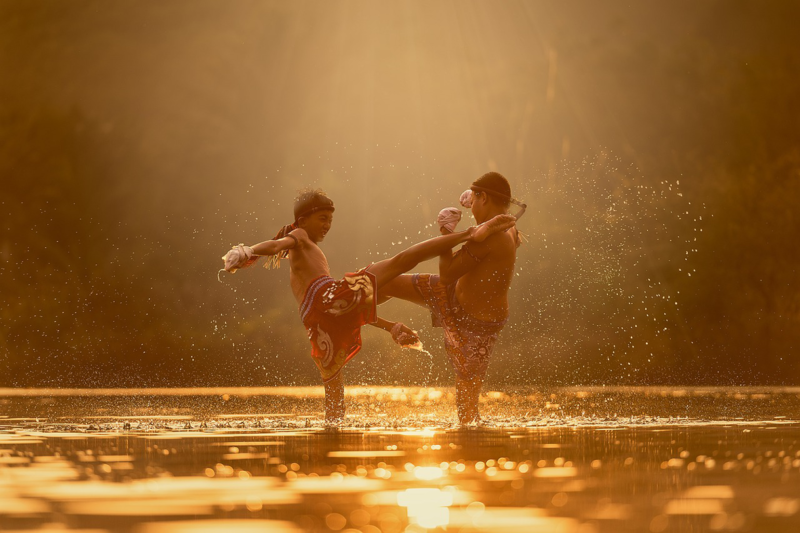The History of Martial Arts: Origins and Evolution Across Cultures
November 1, 2024

Martial arts is a profound practice that goes beyond mere self-defense; it is a blend of discipline, philosophy, and culture that has evolved across centuries and continents. From ancient combat techniques to modern-day mixed martial arts, the journey of martial arts is a story of human resilience, innovation, and cultural exchange.
1. Ancient Beginnings: The Roots of Martial Arts
The origins of martial arts trace back to ancient civilizations where self-defense, survival, and war tactics were crucial. In China, India, Greece, and Egypt, martial arts started as a necessity for survival, eventually transforming into practices with spiritual and philosophical elements.
- India: Ancient Indian martial arts, such as Kalaripayattu, emerged as early as 200 BCE in the southern regions. Kalaripayattu combined combative skills with spiritual practices, and it influenced other Asian martial arts as Indian monks traveled across the continent.
- China: The roots of Chinese martial arts are found in the Zhou Dynasty (1046–256 BCE), evolving through the philosophies of Taoism, Confucianism, and Buddhism. Shaolin Kung Fu, one of the most renowned styles, was developed by monks for self-defense and mental discipline.
- Egypt: Ancient Egyptian martial arts were evident in wrestling depictions on temple walls dating back to 2000 BCE, showcasing grappling techniques and weaponry training for both self-defense and military training.
As these ancient practices developed, they absorbed cultural elements, rituals, and philosophies, creating complex martial arts systems that were passed down through generations.
2. East Asian Martial Arts: A Legacy of Tradition
The development of martial arts in East Asia is one of the most profound in history, encompassing Japan, China, Korea, and other neighboring regions. Each culture developed unique martial arts styles influenced by social, philosophical, and religious factors.
- China: Chinese martial arts, collectively known as Wushu or Kung Fu, include a wide variety of styles like Tai Chi, Wing Chun, and Shaolin. These practices often emphasize balance, internal energy (Qi), and intricate movements, reflecting the deep cultural and spiritual beliefs of the region.
- Japan: Japanese martial arts emerged as the samurai class rose to power. The Bushido code of honor led to the development of Kendo, Judo, Jujutsu, and Karate, each emphasizing discipline, respect, and mental strength. These arts evolved into sports and self-defense techniques practiced worldwide.
- Korea: Taekwondo, Hapkido, and Taekkyeon are Korea’s primary contributions to martial arts. Influenced by Korean culture and values, these styles focus on powerful strikes, especially high, fast kicks, and have become globally recognized, with Taekwondo being an Olympic sport.
East Asian martial arts continue to thrive today, not only as sports but also as forms of self-development, meditation, and cultural preservation.
3. European Martial Arts: Rediscovery and Renaissance
Though often overshadowed by Asian martial arts, Europe has its own rich history of martial traditions, from medieval swordsmanship to Greco-Roman wrestling.
- Greco-Roman Wrestling: Originating in ancient Greece, Greco-Roman wrestling was a sport that combined physical strength with skillful technique. It became a cornerstone of the Olympic Games and influenced wrestling styles worldwide.
- Medieval Combat: In medieval Europe, knights trained in swordsmanship, archery, and hand-to-hand combat. Manuals from the 14th century detail combat techniques and weapons training that formed the basis of European martial arts.
- Fencing: Fencing evolved from dueling with swords to a competitive sport. Italian and French fencing schools dominated the field, developing techniques that are still taught in modern fencing schools today.
Modern-day historical European martial arts (HEMA) are dedicated to reviving these ancient combat techniques, preserving European martial heritage.
4. South Asian and Southeast Asian Martial Arts: A Fusion of Combat and Culture
Martial arts in South and Southeast Asia developed through a mixture of indigenous practices and external influences. These regions are known for martial arts that blend physical prowess with cultural and religious elements.
- Muay Thai (Thailand): Known as the “Art of Eight Limbs,” Muay Thai uses fists, elbows, knees, and shins. This martial art evolved as a form of self-defense for Thai soldiers and became a widely respected combat sport.
- Silat (Indonesia, Malaysia): Silat includes a diverse range of techniques, often integrating spiritual and ceremonial elements. It developed as a means of self-defense and is practiced widely across Southeast Asia.
- Vajra Mushti (India): Vajra Mushti is an ancient Indian martial art involving weaponry and hand-to-hand combat. Practitioners often used knuckle dusters and were trained in wrestling and grappling techniques.
These martial arts are deeply embedded in the cultural identities of their regions and are practiced not only for self-defense but also as part of traditional ceremonies and performances.
5. The Birth of Modern Martial Arts: From Tradition to Sport
As martial arts spread globally, traditional practices evolved into competitive sports, bringing them into the public eye. The transformation of martial arts from ancient fighting techniques to modern sports reflects changes in societal values and international influence.
- Judo: Developed in the late 19th century by Jigoro Kano in Japan, Judo focuses on throws and ground control. It became one of the first martial arts to gain international recognition as a sport and is now part of the Olympic Games.
- Brazilian Jiu-Jitsu (BJJ): BJJ originated from Japanese Jujutsu and Judo techniques, brought to Brazil by Mitsuyo Maeda and later adapted by the Gracie family. It focuses on grappling and ground fighting, emphasizing technique over brute strength.
- Karate: Originally from Okinawa, Karate was influenced by Chinese martial arts and developed into a modern sport that emphasizes powerful strikes. Karate has become popular worldwide and is recognized as an Olympic sport.
The growth of these martial arts into international sports helped bridge cultural gaps, encouraging mutual respect and understanding between practitioners worldwide.
6. The Rise of Mixed Martial Arts (MMA): A Modern Fusion
Mixed Martial Arts (MMA) combines elements of multiple martial arts styles, allowing practitioners to use techniques from striking, grappling, and ground fighting. MMA’s popularity has skyrocketed with organizations like the UFC showcasing fighters from diverse martial backgrounds.
How MMA Evolved:
- In the 1990s, Brazilian Jiu-Jitsu practitioners demonstrated the effectiveness of ground fighting, leading to a rise in grappling-focused styles.
- Striking styles like Muay Thai, Boxing, and Karate became integrated as fighters recognized the need for versatility.
- Today, MMA training includes a mix of striking, grappling, and submissions, allowing fighters to adapt to various opponents.
MMA represents the ultimate fusion of martial arts, bringing together techniques and philosophies from around the world.
Conclusion: The Enduring Legacy of Martial Arts
Martial arts is more than a practice of combat; it is a legacy of culture, resilience, and self-discovery. Whether in ancient battlefields, peaceful monasteries, or modern arenas, martial arts continues to inspire practitioners around the world.
From ancient warriors to present-day athletes, the evolution of martial arts demonstrates a universal human desire for strength, discipline, and self-improvement. As we continue to learn and share martial arts across cultures, it serves as a bridge that connects the past, present, and future.
Martial arts’ history is a testament to humanity’s adaptability and cultural exchange. It stands as a global tradition, where each practitioner becomes part of an ancient yet ever-evolving story.







